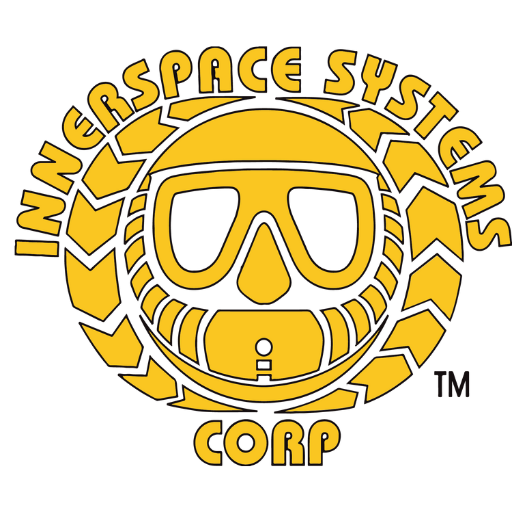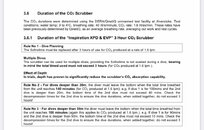You are using an out of date browser. It may not display this or other websites correctly.
You should upgrade or use an alternative browser.
You should upgrade or use an alternative browser.
New book on scrubber canisters by John Clarke
- Thread starter sea_ledford
- Start date
Please register or login
Welcome to ScubaBoard, the world's largest scuba diving community. Registration is not required to read the forums, but we encourage you to join. Joining has its benefits and enables you to participate in the discussions.
Benefits of registering include
- Ability to post and comment on topics and discussions.
- A Free photo gallery to share your dive photos with the world.
- You can make this box go away
-Sven-
Registered
- Messages
- 14,202
- Reaction score
- 11,467
- Location
- Port Orchard, Washington State
- # of dives
- 1000 - 2499
except nobody is working at 1.6 lpm o2 on a diveAP have the best rebreather manual imho. Attached shows the considerations they have for scrubber duration.
Geo7
Contributor
I kinda like ISC's way of providing test data for a variety of workloads/depths, and especially how in the last example below they use a more realistic scenario. They don't have a manual though... 
CO2 DURATION, 5.5 lbs radial scrubber:
Gas mix: 09/66 tmx (PO2 1.0) (END 80fsw / 24msw), depth: 330fsw / 100 msw, water temp: 73°f / 23°c, 40 RMV / 20 BPM / 2L TV. CO2 production: 1.35 LPM. This is the equivalent to a U.S. Combat diver swimming above .85 knots. Time - 218 minutes. U.S. Navy test methods tm 01-94.
Gas mix: 09/66 TMX (po2 1.0) (END 80 fsw / 24 msw), depth: 330 fsw / 100 msw, water temp 39°F / 4°C, 40 RMV / 20 BMP / 2L TV. CO2 production: 1.6 LPM. Moderately extreme level of swimming exertion. Time 102 min. CE standard.
Gas mix: air, depth: 132fsw / 40 msw, water temp 39°F / 4°C, 40 RMV / 20 BPM / 2L TV. CO2 production: 1.6 LPM. Moderately extreme level of swimming exertion. Time 160 min. CE standard.
Gas mix: air, depth: 132fsw / 40msw variable depths, water temp 50°F / 10°C, CO2 production: variable. Kick and glide recreational level of swimming exertion. Time 5 hours. The example of this type of diving would be diving in Scapa Flow, Scotland, doing two 75 min decompression dives a day for two days and then throw the granular material away.
CO2 DURATION, 5.5 lbs radial scrubber:
Gas mix: 09/66 tmx (PO2 1.0) (END 80fsw / 24msw), depth: 330fsw / 100 msw, water temp: 73°f / 23°c, 40 RMV / 20 BPM / 2L TV. CO2 production: 1.35 LPM. This is the equivalent to a U.S. Combat diver swimming above .85 knots. Time - 218 minutes. U.S. Navy test methods tm 01-94.
Gas mix: 09/66 TMX (po2 1.0) (END 80 fsw / 24 msw), depth: 330 fsw / 100 msw, water temp 39°F / 4°C, 40 RMV / 20 BMP / 2L TV. CO2 production: 1.6 LPM. Moderately extreme level of swimming exertion. Time 102 min. CE standard.
Gas mix: air, depth: 132fsw / 40 msw, water temp 39°F / 4°C, 40 RMV / 20 BPM / 2L TV. CO2 production: 1.6 LPM. Moderately extreme level of swimming exertion. Time 160 min. CE standard.
Gas mix: air, depth: 132fsw / 40msw variable depths, water temp 50°F / 10°C, CO2 production: variable. Kick and glide recreational level of swimming exertion. Time 5 hours. The example of this type of diving would be diving in Scapa Flow, Scotland, doing two 75 min decompression dives a day for two days and then throw the granular material away.
Geo7
Contributor
Oops, did't notice this point was made earlier...
Still waiting for my copy of the book btw...Here’s an example of a manufacturer that estimates different conditions:

not available - InnerSpace Systems Corporation
Section Under Construction This section is currently under construction and has not yet been approved for public use. Please be patient as we continue to work on completing it. Thank you for your understanding and we invite you to check back soon.www.megccr.com
- Messages
- 14,202
- Reaction score
- 11,467
- Location
- Port Orchard, Washington State
- # of dives
- 1000 - 2499
I have my copy and will check it out over the weekend  John's blog was always top notch even if difficult to navigate so I have high hopes here
John's blog was always top notch even if difficult to navigate so I have high hopes here
Kay Dee
Contributor
Coincidently, and priot to reading this thread, I just alluded to this fact in a post re Dave Shaw's choice of sorb on his fatal dive. Post #67, third 'point', this page.Finished the book. Pretty thoughtful stuff. While I never pushed scrubber, the Dr. Clarke's writing wants me to be even more conservative. A few quick points.
- There is a trade-off between what we call WOB and scrubber efficiency. Deep divers may benefit from larger sorb grains, like 408. (Don't blindly follow this point - read the book first)
809 feet?
Another failed suicide attempt. Also lucky. Pointless. Guinness should be ashamed of themselves. Funny how everyone is bashing this women going on a dive but no one says this about Dr. Richard Harris or Dr. Craig Challen and Dr. Simon Mitchell who was part of there support team who...
Just ordered it. Should come after Christmas.
Geo7
Contributor
Yup, I'd say he has done the diving community a great service by publishing his work through the blog and now this book, sharing info that would otherwise be harder to access in (admittedly also excellent) NEDU reports. I hope people realize the ressources and years of cutting edge research on this very topic that back up John Clarkes expertise. Just got my book, looking forward to study it!I have my copy and will check it out over the weekendJohn's blog was always top notch even if difficult to navigate so I have high hopes here
Similar threads
- Replies
- 17
- Views
- 3,756
- Replies
- 16
- Views
- 3,685
- Replies
- 24
- Views
- 6,861
- Replies
- 16
- Views
- 2,677




